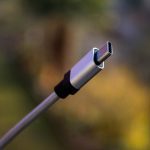From wind turbine inspection to traffic monitoring, drones are up for any challenge. One of the key areas of focus for companies has been the delivery of various items. Companies are increasingly aiming to deliver items more quickly in order to build a reputation as being reliable and to set themselves apart from the competitors. Drones offer a relatively low cost means of delivering items quickly. They offer the benefit of the speed of air travel but they are not as expensive to run as larger, manned aircraft. This is an exciting, emerging field. Below are some intriguing applications which highlight the development of drone delivery across different sectors.
Pizza Delivery in New Zealand
Customers in New Zealand have the option of getting their Domino’s pizza delivered by drone. This service aims at providing 10-minute pizza deliveries. The drones used can travel at up to 30 km/h and drop pizza’s into customers yards using a detachable tow rope. Take a look at the process from beginning to end below.
Burrito Delivery in Australia
Since we’re on the topic of food, now is a good time to discuss burritos. A Mexican restaurant called Guzman Y Gomez (GYG) has recently partnered with Alphabet’s project wing to deliver their burritos to customers in a remote area. The idea behind this project is to deliver freshly cooked burritos quickly without the hassle of conventional means of transportation (which would take longer to deliver in a remote area anyway). These drones can travel at up to 120 km/h and carry a payload of up to 1kg.
Drone Deliveries to a Remote Community in Canada
Due to its remote location, groceries in the remote Moose Cree First Nation in northern Canada are about 45 percent more expensive than in more southern areas. This is largely due to groceries having to be delivered via helicopters which cost in excess of $1,000 per hour to rent. This community has partnered with Drone Delivery Canada to experiment delivery of groceries using drones. They aim to achieve much cheaper delivery costs with it.
Boeing Heavy Lifter
While the previous applications may not have necessarily involved heavy cargo, this is not the case with Boeing’s delivery drone effort. Aimed at rugged environments such as oil rigs and military installations, this drone can carry a payload of up to 150 pounds. Delivery of cargo in these harsh environments via conventional means such as helicopters can be dangerous which means drones would definitely be asset if introduced.
Final Thoughts
For residential deliveries, drones may have issues landing in more crammed up spaces. Delivery companies might also run into legal hurdles while operating in some countries, partly because legislation pertaining to the use of drones has not yet been put in place. With that being said, the companies responsible for the above applications aren’t holding back and are pushing the envelope in this field. It will be exciting to see the day when drone delivery becomes the norm. The above article may contain affiliate links which help support Guiding Tech. However, it does not affect our editorial integrity. The content remains unbiased and authentic.










